Behind the scenes of Otterbein University’s partnership with Antioch University
June 10, 2025 BlogWe’re excited to launch Tyton Partners’ new interview series, Five for the Future: Spotlight on Transformative Institutional Partnerships….
Given the size of the American Rescue Plan (ARP) Elementary and Secondary School Emergency Relief Fund – and its looming September 2024 deadline – the utilization and impact of these funds has been a point of national interest. One recent Wall Street Journal headline painted the picture of a K-12 sector unable to make use of the $122B “sunk into the system,” reporting the vast majority of funds remain unspent. While it’s true K-12 districts have employed a wide range of strategies in response to the stimulus, our research over the course of this past year reveals a K-12 sector that has been far more intentional – and proactive – in deploying funds to meet a variety of shifting priorities and needs.
This month, we took the pulse of district administrators to better understand the level of usage of ARP ESSER to-date, their outlook for the next two years, and the capacity challenges that will continue to persist as a result of teacher shortages. Our findings underscore an education system still in recovery, but a funding environment that has started to work in its favor.
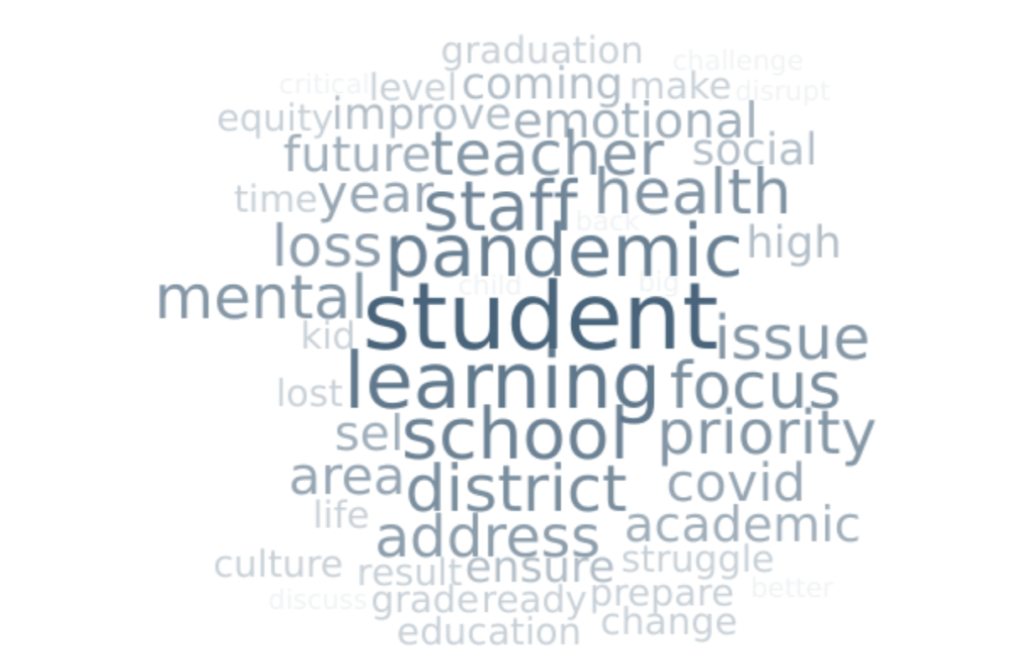
In late June 2022, we conducted a pulse survey of more than 100 district administrators from across the U.S. to get a directional sense of the status of ARP ESSER funds and how priorities are shifting over the next two years. Not surprisingly, the district leaders we spoke with report varying levels of usage to-date, but nearly all have developed a plan for the future – more than 90% of those surveyed have a plan for when and where they will spend remaining funds. As district leaders continue to face immense pressure stemming from teacher shortages and concerns regarding student well-being, it will remain important to keep a pulse on the solutions and services best positioned to meet their needs. Below, we highlight a selected set of findings that reveal how a collection of district leaders are grappling with these issues.
Since the $122B in ARP ESSER funds were distributed to states, many districts have already spent a sizable portion. Nevertheless, among the district leaders we spoke with, nearly half of funds remain available for future use before expiration in September 2024.
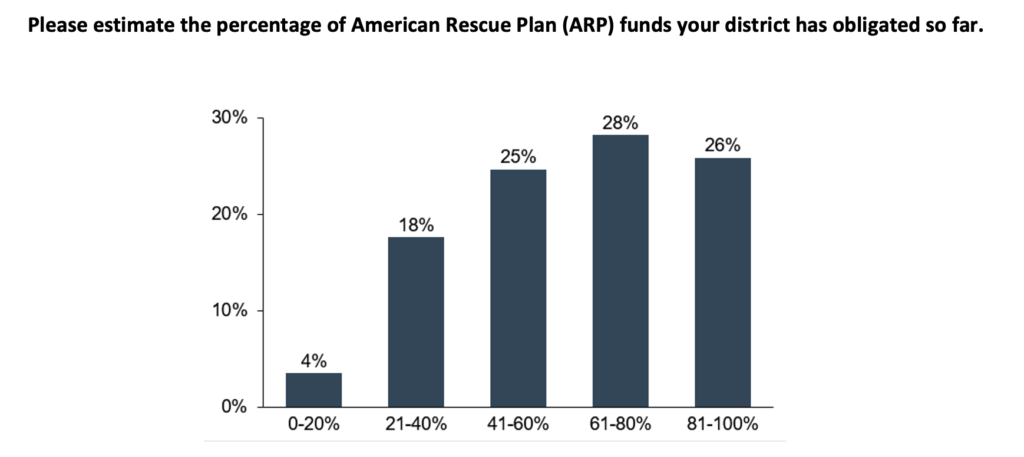
At this time, many districts have leveraged ESSER fund to invest in school infrastructure in ways that have long-term sustainability. For example, 57% of respondents have obligated funds towards technology hardware and 43% have made improvements and repairs to school facilities. Moving forward, however, the district leaders we spoke with anticipate a greater focus on curriculum solutions, supplemental academic services, and teacher professional development. A shift of this nature suggests that as districts stabilize and extend their core infrastructure, they will increasingly be able to focus attention – and funds – on instructional priorities and outcomes.
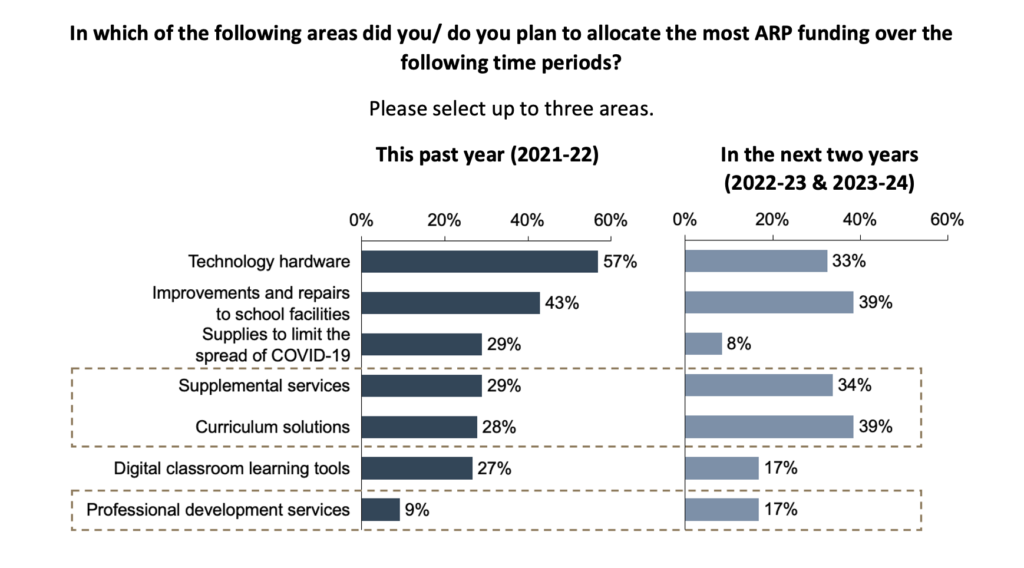
As it relates to supplemental academic services, districts are employing a variety of models and solutions in order to accelerate academic outcomes while grappling with capacity issues.
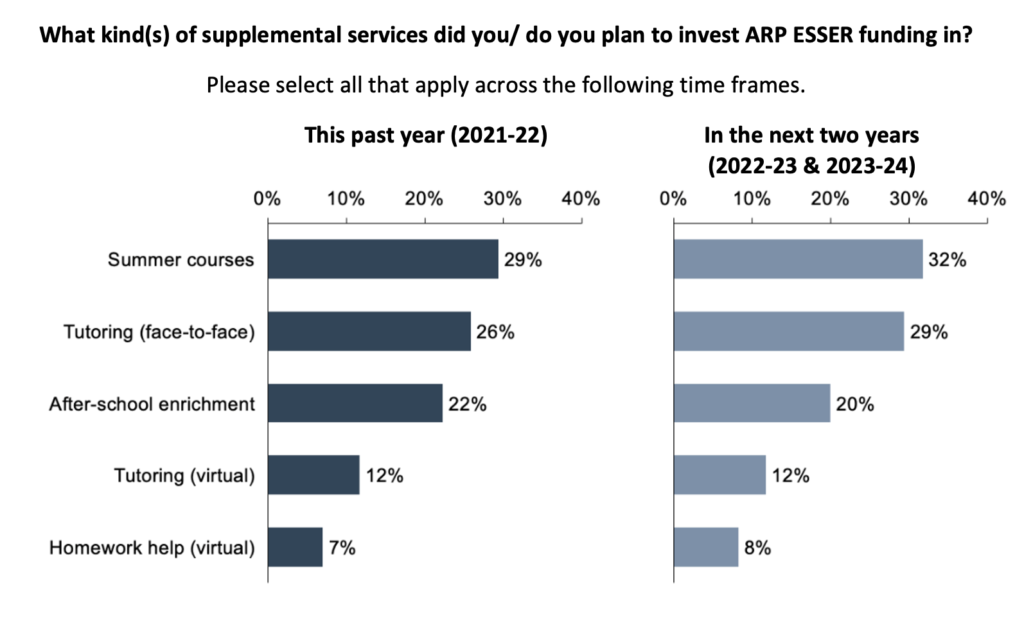
Looking ahead, technology hardware and facility improvements will remain important, but the leaders we spoke with also describe an intention to be more student- and teacher-focused as they seek ways to maximize impact with the remaining funds before the 2024 deadline. Partners should help districts navigate the complexities of the next two years by identifying key areas of need and proposing solutions that balance immediate impact with enduring value.
A desire to heal their school communities is the main catalyst for district funding priorities. Among the leaders we spoke with, the most pressing strategic priorities for this upcoming year include improving student and teacher well-being – and in turn retention – as well as addressing pandemic-related learning loss. Broadly, district leaders anticipate student behavioral and academic challenges and teacher burnout will persist.
“Since the pandemic, the emotional state of students and adults has been in steady decline. Addressing this is our top priority.”
— PRINCIPAL, OK
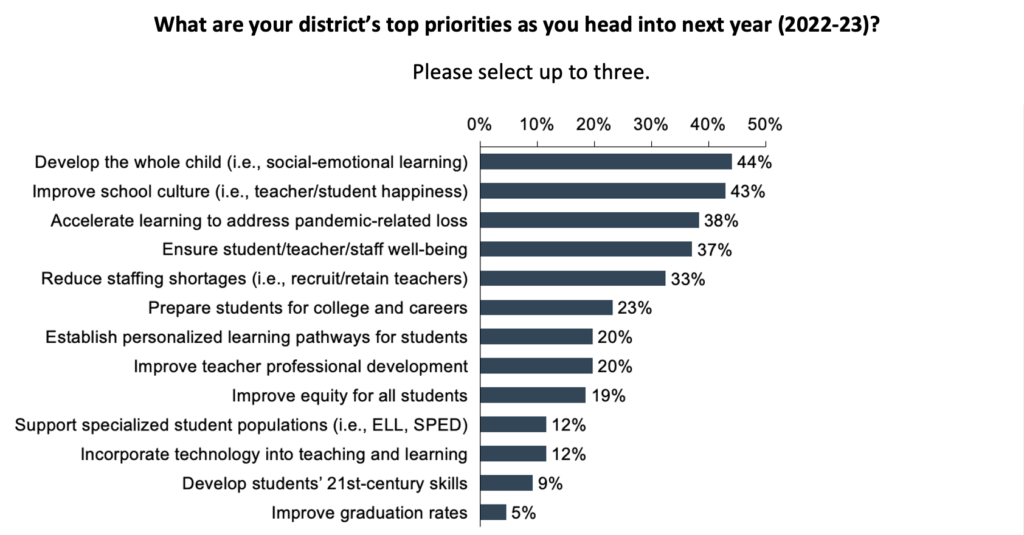
Districts’ desire to accelerate academic outcomes is restricted by limited in-house instructional staff, creating new opportunities for external service providers to increase capacity and talent development. Among the district leaders we spoke with, 8% of instructional roles, on average, are currently vacant.
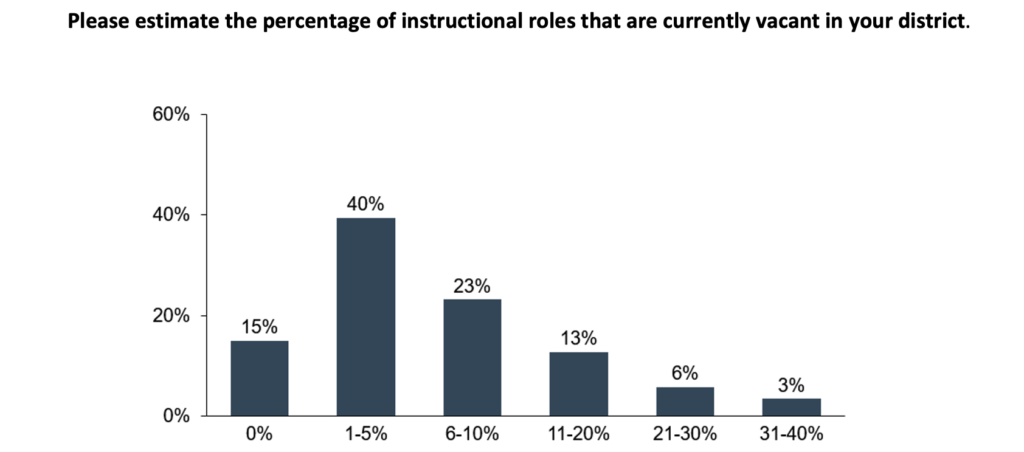
Further, 66% of respondents indicated that relative to pre-pandemic years, it has been somewhat or extremely difficult (38% and 28%, respectively) to recruit and retain full-time teachers. These shortages have led some districts to hire teachers “with minimal training and no experience,” which has implications for providers. According to one respondent, “our teachers are inexperienced – they need ready to use materials that require minimal prep but still retain high quality of rigor.” The capacity issues stemming from teacher attrition create outsized challenges for districts that have implications on the business community. Adaptable, self-paced curriculum platforms and – in some cases – fully virtual course options and tutoring services can help districts increase capacity and may help reduce burnout. As this dynamic persists, districts will continue to rely on partners to provide solutions and services that help them accelerate learning with a limited supply of teachers.
“If we can’t find a certified teacher, we have to utilize virtual school partners with a facilitator in the classroom. This may not be best for all students, but of course it’s better than nothing.”
— SUPERINTENDENT, KY
K-12 districts are not racing towards a cliff of unspent funds being reappropriated. Districts have taken advantage of ARP ESSER funds to explore new partnerships and models to help solve persistent challenges related to student success and teacher attrition. Many districts will seek new solution models that could take root in the next two years, and the impact of the $122B will likely endure well beyond expiration in 2024.
Funding dynamics will continue to influence K-12 district decision-making in the coming months and years. If you have questions or additional thoughts about this topic, or our analysis, we would value the opportunity to continue the conversation.